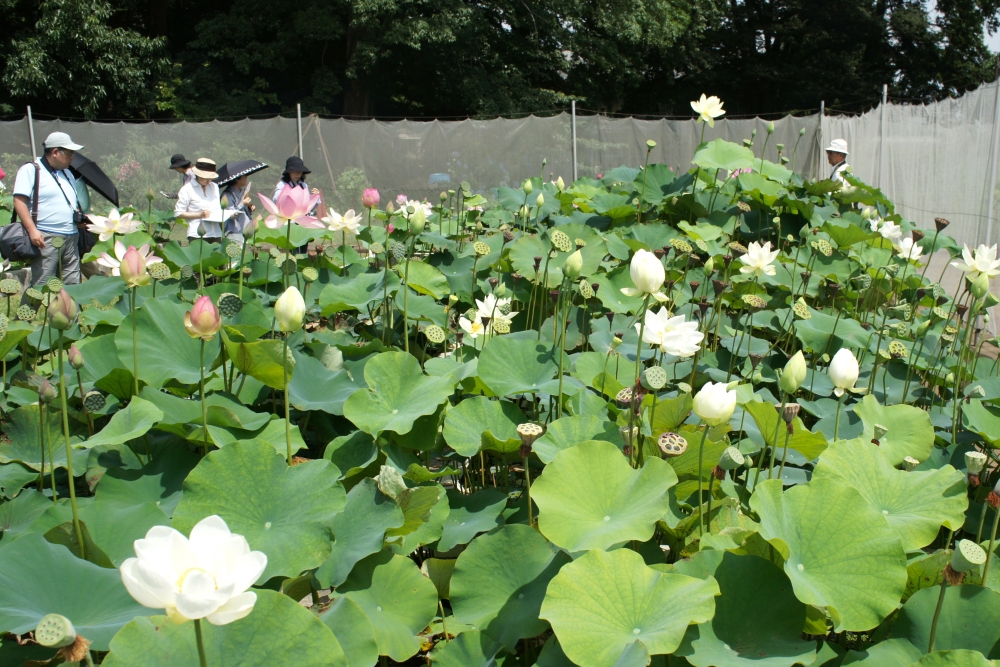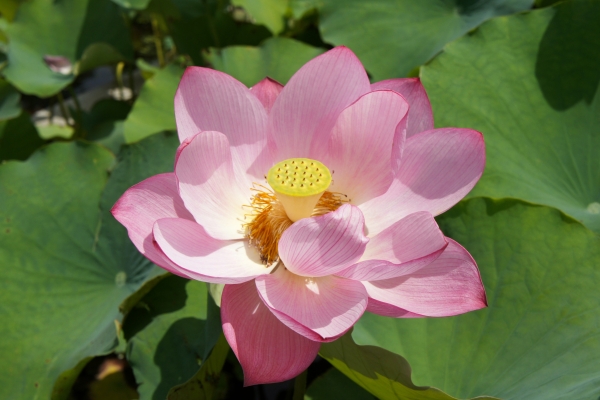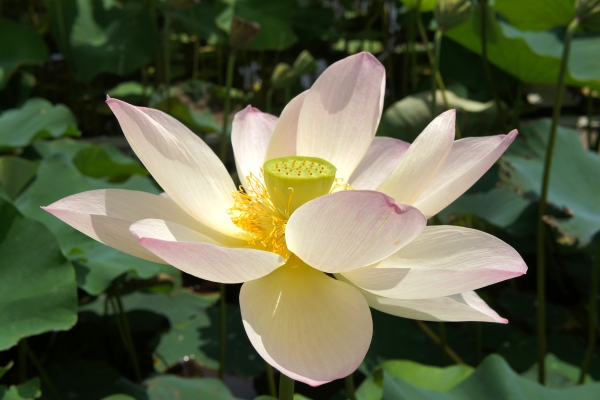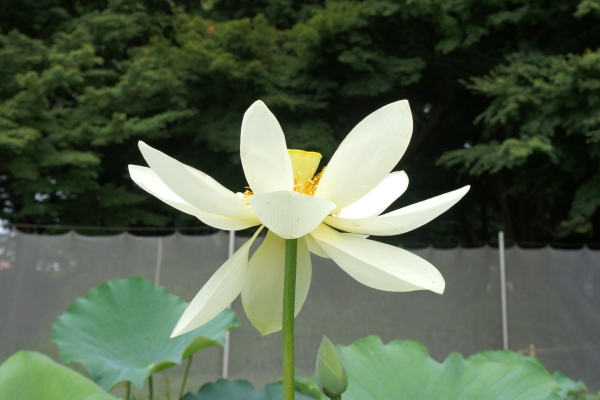UTokyo’s Lotus Exhibition Garden holds annual showcase


The Lotus Exhibition Garden of the Institute for Sustainable Agro-ecosystem Services of the University of Tokyo opens its doors to the public every summer. Situated in Tanashi, Nishitokyo City, its origins date back to 1951, when Dr. Ichirō Ōga, a botanist with a doctorate in science from the University of Tokyo, excavated two-millennia-old lotus seeds from the site of the former university farm in Kemigawa, Chiba Prefecture. This in turn led to the collection and cultivation of lotus flowers at the university in the botanical laboratory of the Faculty of Agriculture, previously based near the excavation site in Chiba. The laboratory has since been moved to its current location.
There are currently 300 different types of lotuses in the garden, of which 100 are on display. Naturally, the Ōga lotus is the main attraction at the garden. What is striking is the diversity of the collection, with a wide variety from Japan and China as well as the rest of the world, including the U.S. and Vietnam. There are also 11 UTokyo originals; Ryokuchi-bijin (緑地美人) and Tsuki-no-hohoemi (月のほほえみ) have been patented. The “parents” of these breeds have been placed next to them, so you can see the precise characteristics that formed these originals.
The lotus plant has a multitude of uses aside from its obvious beauty. For one, the seeds are edible along with the lotus root—they have a starchy consistency, and are often used in Chinese medicine. The leaf and the stem can be used to drink sake as a funnel-like cup. The leaf is also extremely hydrophobic, known as the “lotus effect”; this has been mimicked and used on the lids of a particular aloe yogurt brand. A line of cosmetics called Renka was created based on the Ōga lotus’ fresh, floral scent (available at the University of Tokyo Communication Center: https://utcc.u-tokyo.ac.jp/).
Roughly a hundred people visit each day to relish the ancient flower. The garden opens to the public every summer during the peak lotus season.









